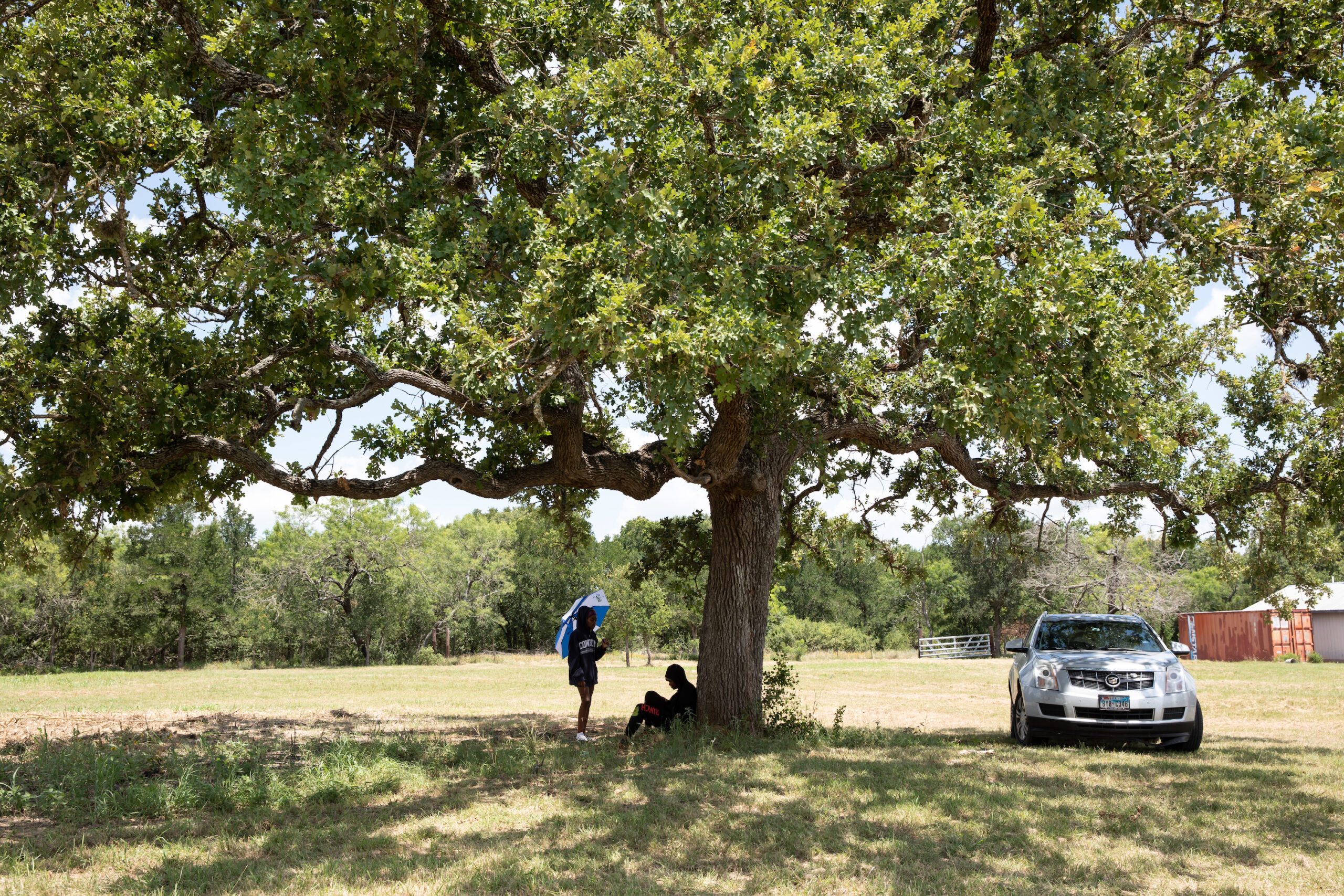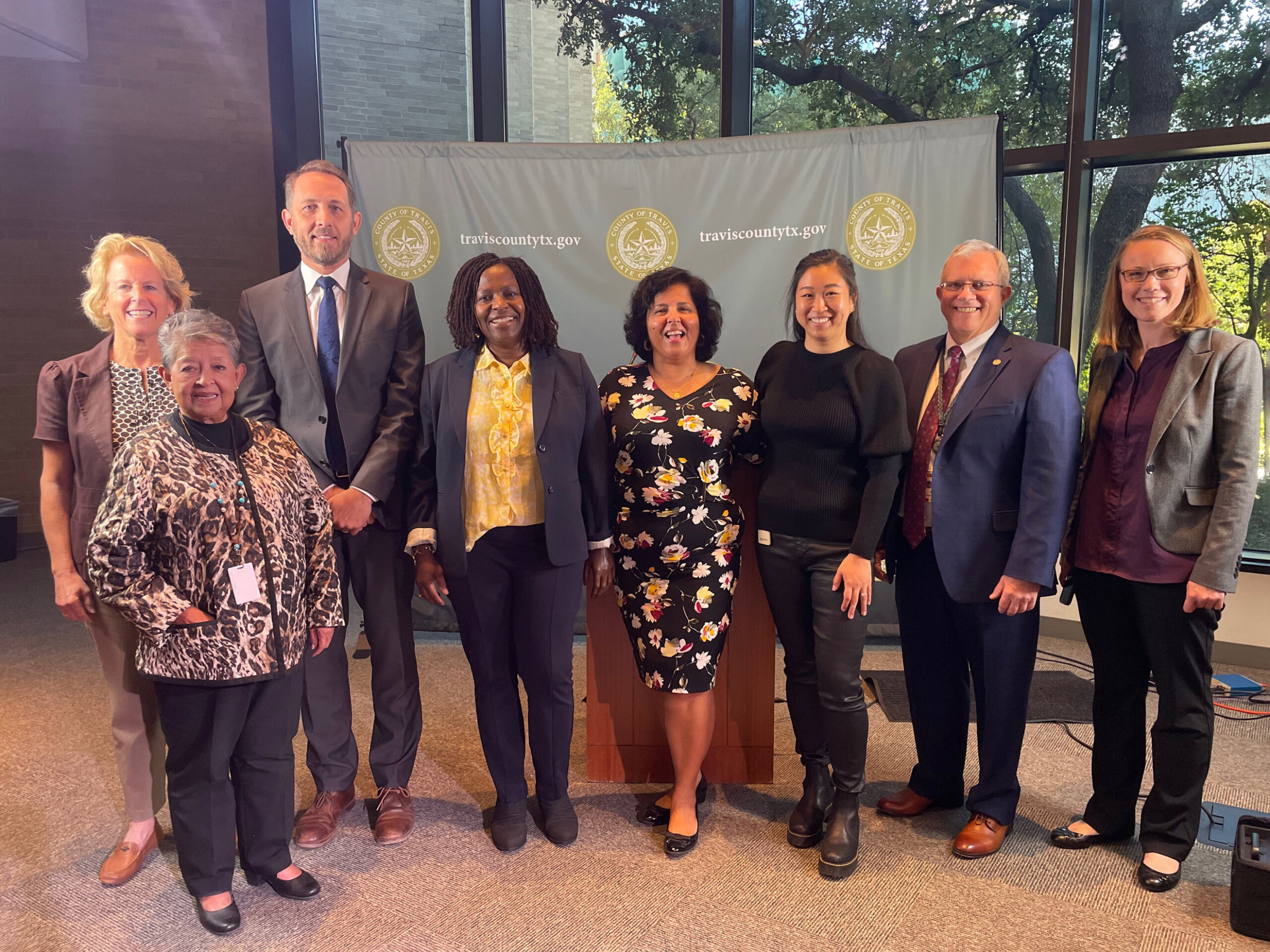Co-creating solutions with rural communities and investing in place-based initiatives.
In defining “rural” communities as those that are non-metro, our work prioritizes Bastrop, Caldwell, and Hays counties, as well as the eastern part of Williamson County. These communities were identified using multiple criteria including, but not limited to, the following: Community readiness to engage in a community change effort; existing momentum to build on community capacity; Community Health Needs Assessment; County Health Rankings & Roadmaps; and community guidance gathered from field trips and listening sessions.
As a Foundation, we are eager to learn alongside communities to ideate and co-create community-designed solutions that over time, tackle complex social issues while building community capacity and amplifying voices not often heard. We are humbled to do this work with the community by leveraging the expertise, wisdom, and lived experiences of multiple partners including residents, community groups, nonprofits, government, school districts, businesses, philanthropy, and others.
The Issue
Rural communities in Central Texas experience significant health disparities and a disproportionate burden of disease morbidity and mortality on several health indicators. On average, rural residents are older, more impoverished, and in worse health than their urban counterparts. They are less likely to have health insurance (employer-based or Medicare/Medicaid) and often experience barriers in obtaining specialty care services.
Furthermore, encroaching population growth from urban and suburban communities has led to longer commutes to work, increased pollution, rising home prices, increased taxes, increased crime rates, fewer agriculture-based industries, and less farmland. The loss of key community institutions, such as farms, rural hospitals, banks, and schools, has led to cultural fragmentation in these communities.
Finally, demographic shifts have increased the number and diversity of residents experiencing poverty in rural communities, creating a higher level of need in these areas.
Despite these challenges, rural communities in Central Texas possess several key assets. They have a strong sense of community, a culture of caring, and a commitment to strengthening local capacity. This often translates into a shared responsibility to address issues, community resilience, and an innovative spirit to do more with less.
Our Approach
For community-level change to take root, rural communities must be the drivers of change and robust networks must exist among stakeholders from across sectors.
We believe that in working with the community to amplify voices least engaged and by elevating community-driven solutions we could collectively, over time, improve rural health and well-being through targeted investments with other public and private co-investors to support thriving rural communities.
In partnership with local stakeholders, the Foundation will seek to improve conditions in Central Texas’ rural communities by activating the following strategies:
- Engaging and empowering rural communities to strengthen networks and transform policies, practices, and alignment of resources to address prioritized social determinants of health.
- Building the capacity of people and places including formal and informal leaders within communities and organizations to lead community-centered change.
- Strategically investing in solutions that harness community assets to support innovation, ecosystem building, and other promising rural-relevant approaches that can be scaled.
Our work with Central Texas rural communities is grounded in the core principles of place-based efforts that acknowledge that this work is complex, and long-term success is contingent on efforts that honor the rich cultural, human, and community assets of each place; requires intentional partnering with those most impacted, takes an ecosystem approach that builds strong alignment between institutions, communities, and resources, and requires incremental and interactive strategies that embrace an emergent approach of “test, do, learn.”
This approach builds community capacity, empowers local residents to work collaboratively to address their own community problems, invests in improving the conditions for residents to live healthy and thrive, and brings together all segments of the rural infrastructure to identify multi-sector solutions that support the health and well-being of residents.
Program Staff
Related Initiatives
Libraries for HealthGoals
Long-Term Outcomes
Our goal: building community capacity while co-creating and investing in long term place-based solutions.
1.
Rural communities have a culture of health that transcends beyond healthcare access.
2.
Rural residents experience strong social connection.
3.
Rural residents are engaged in thriving cross-sector, community-based networks that promote health and well-being.
4.
Rural systems undergo change that includes policy, practices, behaviors, and resources to promote health and well-being.
5.
Rural organizations have a strong infrastructure in place with adequate capacity.
6.
Rural residents are engaged and empowered by diverse civic leadership to activate and improve community well-being.



